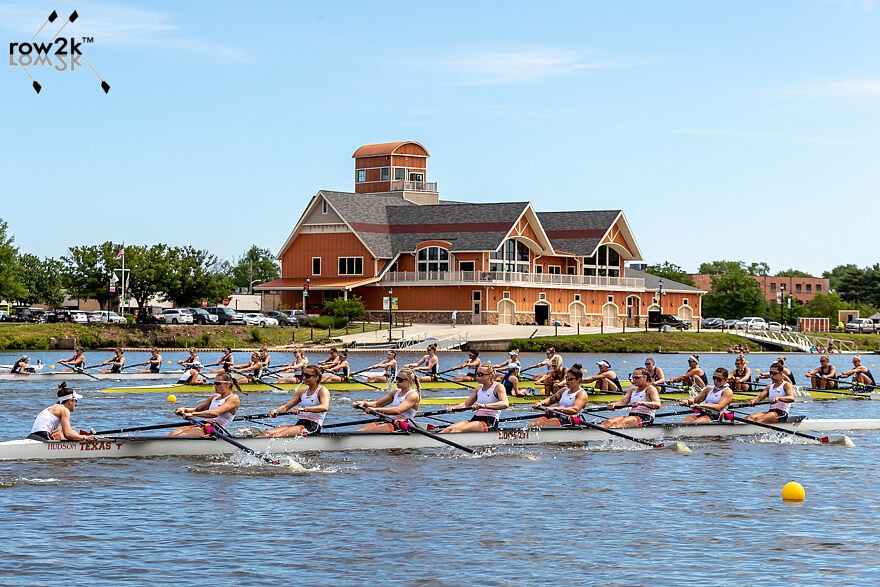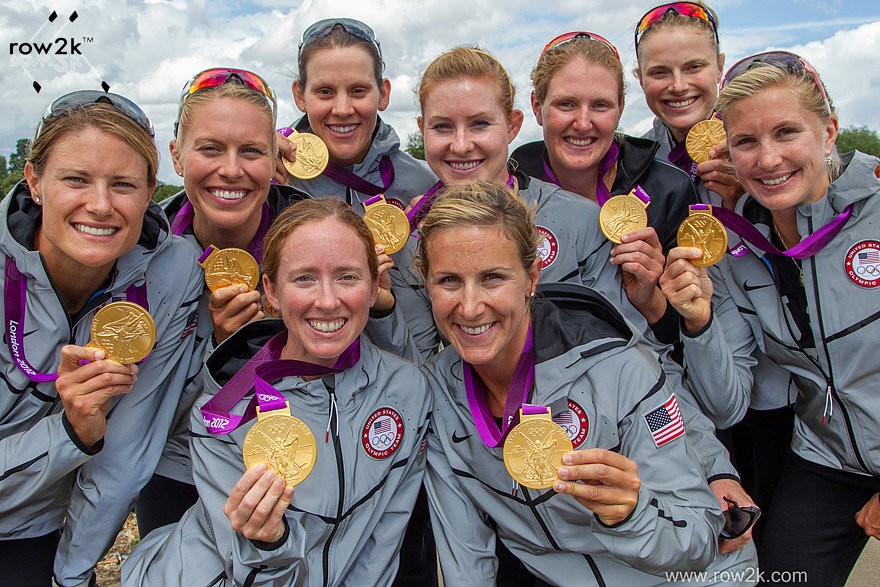
January is the obvious time to set goals for the coming year, but before you do, take a good look back at the previous year. Were you happy with what you accomplished? Were you on the right track or do you need to make changes?
If you're a racer, were you satisfied with your results? There's no doubt everyone can improve, but can you pinpoint your weaknesses? What technical part of your stroke is holding you back? A coach can help here, but if you don't have one, you can use still photos from your race or better yet, video if you have any. Once you have an area to work on, find some drills that will help, from your coach or the internet, then incorporate these drills into your workouts.
Were you let behind off the start? Did you fade towards the end of the race? Put more emphasis on speed work if that's your weakness or work in longer, steady state rows if you need to build your base.
Plan your race schedule now in order to develop a training schedule. If you want to do a good number of races, you'll be better off training through some, perhaps only tapering for one big race a season. If you're racing for the first time, pick a race close to home, preferably on a course you're familiar with.
Plan out all the logistics ahead of time. Does your club have a boat you can use? How will you get it to the race? Practice all aspects of the race, including the warm up. Try to recreate race conditions as closely as possible.
If injuries kept you from reaching your goals last year, that's a weakness you need to address sooner rather than later. Rowing takes a lot of core strength, but don't just focus on your abs; strengthen your back as well. Many injuries develop because of an imbalance in the muscle groups. Consider taking a Pilates and/or yoga class to gain flexibility as well as core strength. Add weightlifting into your workout mix as well. As we get older, we begin to lose muscle mass but we can slow or halt this process through lifting.
A very common injury among rowers, particularly women, is a rib fracture or intercostal muscle pull. There is so much emphasis on the pulling motion that the opposing muscles are often forgotten. Work some pushups and bench press into your regular routine. And while you're building up your quads with leg press, squats and jumpees, don't forget about the hamstrings. Staying injury free will allow you to keep your training on track.
If you didn't race and don't intend to, did you spend as much time on the water as you wanted? Try keeping track of your mileage, setting a goal for a yearend total. Find a friend or group that rows regularly and join them. If you're considering switching from sweep to sculling or want to get more comfortable in small boats, nothing beats time on the water.
For all rowers – competitive, recreational, experienced, novice – you can learn a lot from watching videos of good rowing. You can easily find Olympic and World Championships rowing on YouTube. If possible, watch in slow motion or frame by frame to see the details but you'll also learn a lot out of simply getting a sense of the rhythm and flow of the stroke. Make it your own.
Plan now for a more successful 2016!
If you enjoy and rely on row2k, we need your help to be able to keep doing all this. Though row2k sometimes looks like a big, outside-funded operation, it mainly runs on enthusiasm and grit. Help us keep it coming, thank you! Learn more.
- Bont Rowing
- Calm Waters Rowing
- Concept 2
- Craftsbury Sculling
- The Crew Classic
- CrewLAB
- Croker
- Dad Vail Regatta
- Durham Boat Co.
- Empacher
- Faster Masters
- Filippi
- Fluidesign
- h2row.net
- HUDSON
- myrow
- Nielsen-Kellerman
- Oak Ridge RA
- Peinert Boat Works
- Pocock Racing Shells
- Race1 USA
- Rockland Rowing Masters Regatta
- RowKraft
- Rubini Jewelers
- Vespoli USA
- WinTech Racing
- Bont Rowing
- Calm Waters Rowing
- Concept 2
- Craftsbury Sculling
- The Crew Classic
- CrewLAB
- Croker
- Dad Vail Regatta
- Durham Boat Co.
- Empacher
- Faster Masters
- Filippi
- Fluidesign
- h2row.net
- HUDSON
- myrow
- Nielsen-Kellerman
- Oak Ridge RA
- Peinert Boat Works
- Pocock Racing Shells
- Race1 USA
- Rockland Rowing Masters Regatta
- RowKraft
- Rubini Jewelers
- Vespoli USA
- WinTech Racing
















